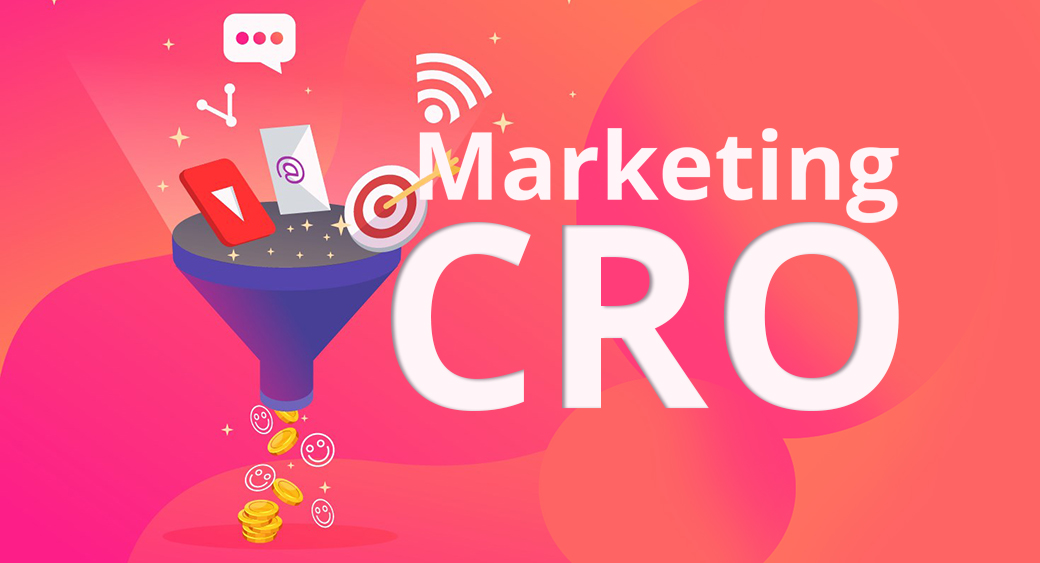
Supercharge Your Success: Unleashing the Power of CRO in Marketing Strategies
Are you tired of spending money on advertising campaigns that don’t convert into sales? Have you heard of CRO in marketing, but aren’t sure what it is or how it could benefit your business?
Well, you’re in luck! In this blog, we’ll explain what CRO is and how it can help you increase your conversion rates and ultimately boost your revenue. So, buckle up and get ready to learn about one of the most important strategies in modern marketing.
CRO, or Conversion Rate Optimization, is a data-driven approach to improving the performance of your website or landing page. By analyzing user behaviour and making targeted changes to your site, you can increase the likelihood that visitors will take the desired action, whether that’s making a purchase, filling out a form, or subscribing to your newsletter.
In the competitive world of online marketing, CRO can be the difference between success and failure. So, let’s dive in and explore the key concepts behind this powerful strategy.
In today’s highly competitive digital landscape, businesses strive to maximize their return on investment (ROI) and achieve sustainable growth. One crucial aspect of achieving these goals lies in the effective implementation of Conversion Rate Optimisation (CRO) strategies.
By understanding the science of conversion and leveraging CRO techniques, marketers can unlock the full potential of their marketing efforts and drive greater success. This blog will delve into what is CRO in marketing, the fundamentals of CRO, crafting an effective CRO strategy, optimizing beyond the website, and analyzing for continuous improvement.
The Fundamentals of Conversion Rate Optimisation
To kickstart an effective CRO strategy, it is essential to define conversion goals. Identifying key metrics and objectives allows marketers to measure success accurately. Conversions can take various forms, including sales, sign-ups, downloads, or any action that aligns with the business’s objectives. By setting conversion funnel and micro-conversion goals, marketers can break down the customer journey and focus on optimizing each stage.
User Experience (UX) analysis plays a critical role in understanding website performance. Conducting usability testing and user surveys provides valuable insights into how visitors interact with the website, identifies pain points, and uncovers areas for improvement. Analyzing heatmaps and user behaviour data further enhances understanding by visualizing user engagement, click patterns, and scroll depth.
Conversion funnel analysis helps identify bottlenecks and optimization opportunities. By assessing drop-off points in the funnel, marketers can pinpoint areas where potential customers abandon the conversion process. Optimizing landing pages and checkout processes by streamlining forms, reducing friction, and improving clarity can significantly impact conversion rates.
Crafting an Effective CRO Strategy
A/B testing is a powerful technique for experimenting with variations to improve results. By identifying elements to test such as headlines, call-to-actions, images, or layout variations, marketers can gain insights into what resonates best with their audience. Structuring A/B tests and analyzing results enables data-driven decision-making, allowing marketers to implement changes that have a positive impact on conversion rates.
Optimizing website copy and messaging is crucial for capturing and retaining user attention. Crafting compelling headlines and subheadings creates an initial hook, while persuasive copy and value propositions provide users with clear and convincing reasons to convert. A focus on addressing pain points, showcasing benefits, and emphasizing unique selling points can help increase conversions.
Design and visual optimization contribute significantly to the overall user experience. Improving website navigation and user flow ensures that visitors can easily find what they’re looking for and navigate through the website effortlessly. Optimizing colour schemes, fonts, and layouts enhances visual appeal, readability, and user engagement, thereby improving conversion rates.
Conversion Optimization Beyond the Website
Email marketing optimization is a valuable strategy for increasing open and click-through rates. Personalizing email content and subject lines based on user preferences and behaviours can significantly improve engagement. Testing different email templates and call-to-actions allows marketers to determine the most effective approaches for driving conversions.
Creating high-converting landing experiences is essential for aligning ad campaigns with landing page messaging. Ensuring a consistent message and providing a seamless transition from the ad to the landing page enhances user experience and reduces bounce rates. Simplifying forms and optimizing conversion elements on landing pages streamline the conversion process, making it easier for users to take the desired action.
With the increasing prevalence of mobile devices, catering to the mobile user experience is paramount. Ensuring mobile responsiveness and fast loading speeds are essential for providing a smooth and engaging mobile experience. Streamlining checkout processes on mobile devices minimizes friction and reduces cart abandonment rates, thus improving mobile conversion rates.
Analyzing and Iterating for Continuous Improvement
Data analysis and insights are at the core of successful CRO strategies. Leveraging analytics tools, setting up conversion tracking, and goal funnels provide marketers with valuable data on user behaviour and conversion patterns. By monitoring and analyzing this data, marketers can identify trends, uncover areas for improvement, and make data-driven decisions to optimize average conversion rates continually.
User feedback and surveys offer direct insights from the audience. Implementing exit surveys and feedback forms allows marketers to gather feedback on user experiences, identify pain points, and collect suggestions for improvement. By listening to the voice of the customer and incorporating their feedback into optimization strategies, marketers can create experiences that better resonate with their target audience.
Final Thoughts
In conclusion, Conversion Rate Optimization (CRO) is a powerful tool that empowers marketers to drive conversion success and fuel business growth. By implementing effective CRO strategies, businesses can optimize their marketing efforts, improve user experiences, and maximize their ROI.
It is essential to embrace a data-driven approach, leveraging analytics tools, and analyzing user behaviour to identify areas for improvement continually. By crafting compelling messaging, optimizing website design, and streamlining the conversion process, businesses can enhance their chances of converting visitors into customers.
Embracing CRO as a fundamental aspect of marketing strategies will enable businesses to stay competitive in the ever-evolving digital landscape and achieve long-term success.

